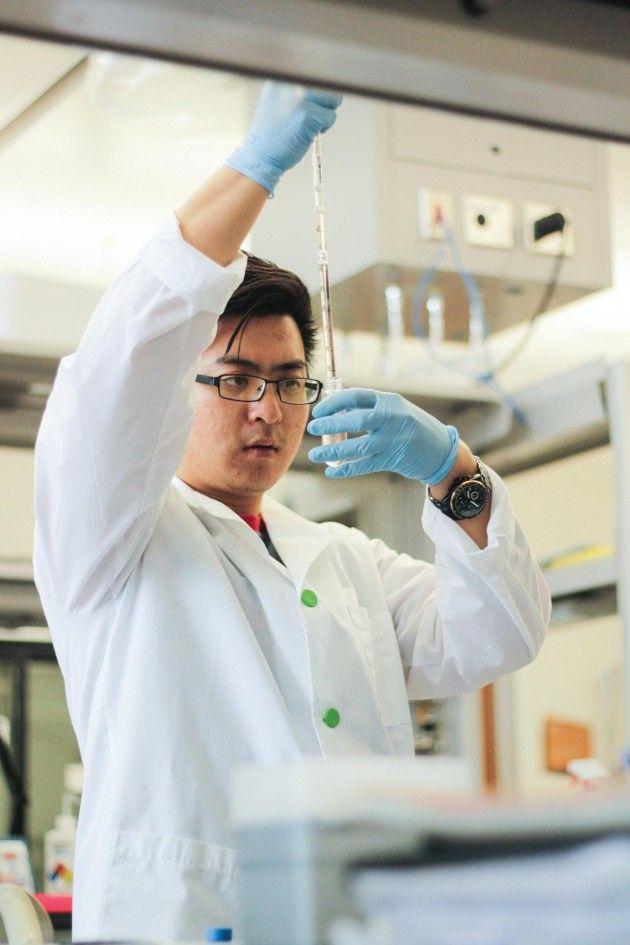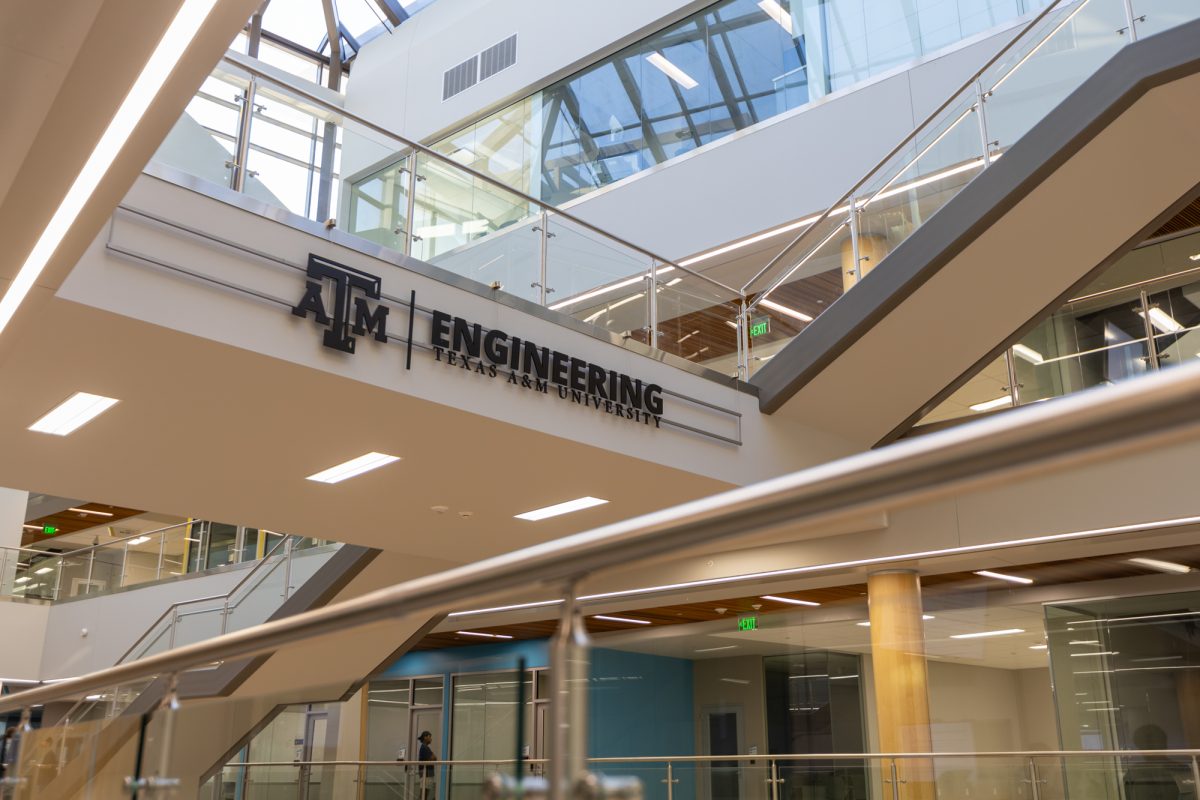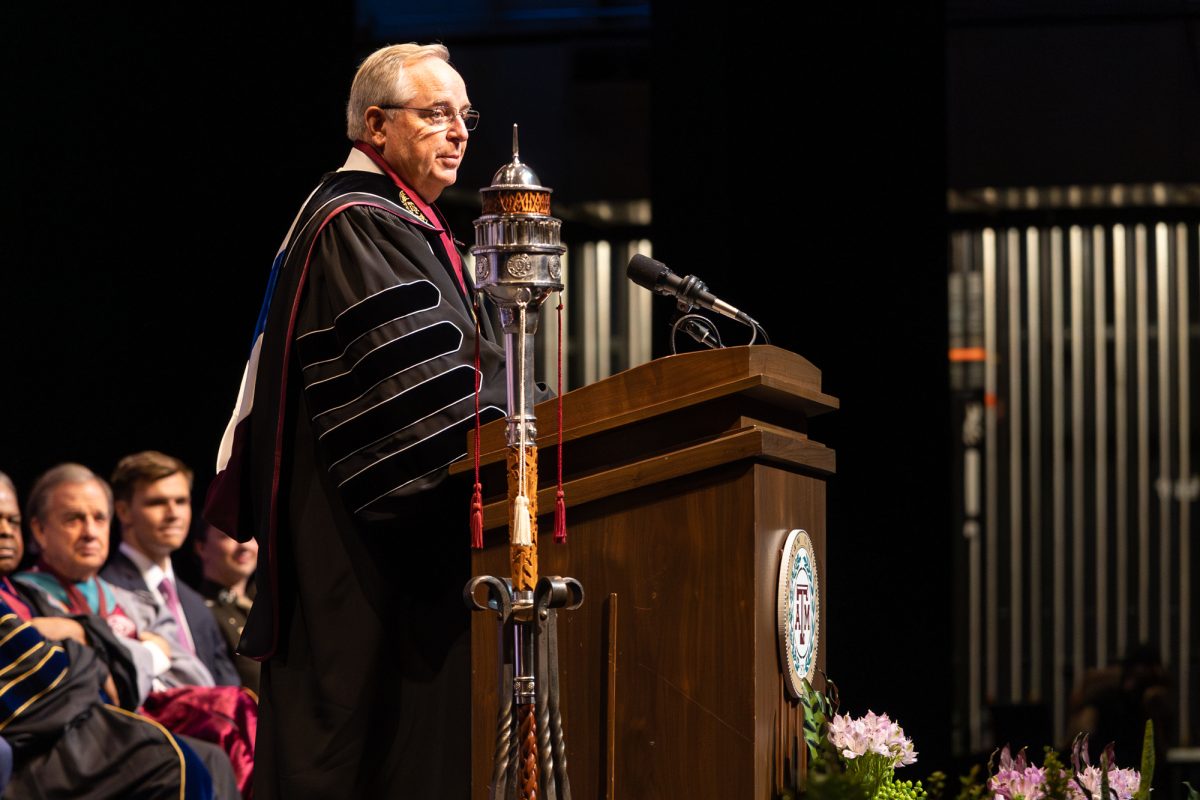Like a subway in New York, transporters in the brain shuffle their passengers along every day, thousands of times per minute, to keep the brain working. These transporters are synaptic vesicles and in Mark Harlow’s lab, researchers navigate through this microscopic traffic to gain insight as to how our brain works.
“We see these images in movies of these electrical impulses traveling through the brain, which is certainly true, that neurons use electrical pulses to move information great distances very, very rapidly, but once that information has gotten from one cell to the other cell, most of the communication now transitions from an electrical impulse into a small chemical signal,” said Harlow, assistant professor of biology. “I study those small chemical signals and how they’re packaged and how that package is in release.”
This chemical communication is made possible through a system of synapses, synaptic vesicles and chemicals known as neurotransmitters. Synapses can be seen as the “train stations” of neurons, connecting neurons to one another. Continuing with the analogy, synaptic vesicles are the trains, making neurotransmitters the passengers being transported between neurons. Harlow’s lab researches this system, focusing on the structure of the synaptic vesicles and the proteins they contain.
Harlow focuses on cholinergic synapses, or synapses that communicate mainly via the neurotransmitter acetylcholine, which tells our muscles when to move. Harlow said although these synapses make up only about one percent of the synapses in the brain, that one percent is highly influential. “These neurons are very, very important for regulating learning and memory and attention,” Harlow said.
Cholinergic neurons should be of particular interest to the average person, Harlow said, because those neurons usually die off in Alzheimer’s patients. This is part of the reason learning and memory functions are diminished in those with Alzheimer’s.
The difficulty of isolating and observing cholinergic neurons in the human brain made neurobiologists such as Harlow turn to a fish known as Torpedo californica, or the electric ray.
“Going back all the way to the beginning of mankind, we’ve known that there was really something unique about the electric rays,” Harlow said. “The Egyptians have hieroglyphs that called them thunder fish. They had made the connection that these fish had the same type of power as lightning. They didn’t know what electricity was, but they knew that these fish would produce something that would shock you.”
Harlow said because the organ used by electric rays to produce electricity is basically a giant synapse, it contains cholinergic vesicles large enough to isolate and observe. Despite this, the vesicles are still so small that biology graduate student and member of Harlow’s lab, Huinan Li, must use techniques such as electron microscopy and electron tomography to view them. At 100 nanometers in diameter, these tiny transporters are almost four times smaller than the shortest visible light wave.
Li said he remains captivated by researching synaptic vesicles, what he called “the most specific part of the nervous system.”
“The reason why I feel it’s very fascinating research is you can relate the mechanism for synaptic vesicle transmission to a lot of neurodegenerative diseases, like Alzheimer’s, Parkinson’s, drug addiction, even alcoholism,” Li said. “All of these will at some point be connected with modern disease and medical research.”
While Li focuses on the structure of the vesicles, neuroscience graduate student Maria Stavrianakou researches the proteins found in the vesicles of the electric ray.
“Eventually we want to understand the structure of these proteins on the vesicle,” Stavrianakou said. “Everything happens because of proteins in biology. Understanding, for example, what kind of vesicular transporters we have will tell us which neurotransmitters get loaded on the vesicle, which neurotransmitters we should expect to find in vesicular release.”
Harlow said although the research in his lab is not likely to directly result in a cure for neurodegenerative diseases, understanding how a neuron communicates will lead to a better understanding of how to keep that communication healthy.
“The studies that we’re doing in the lab help broaden the understanding of the chemical transmission that’s occurring there and hopefully may provide a window into how to make the synapses healthier, even after some types of injury, like Alzheimer’s,” Harlow said. “If we make sure that, and this is science communities in general, we’re doing really good basic science, eventually we will get to the point that we will have the ability to deal with a lot of diseases.”
The Brain Train
January 28, 2014
0
Donate to The Battalion
$90
$2500
Contributed
Our Goal
Your donation will support the student journalists of Texas A&M University - College Station. Your contribution will allow us to purchase equipment and cover our annual website hosting costs, in addition to paying freelance staffers for their work, travel costs for coverage and more!
More to Discover










